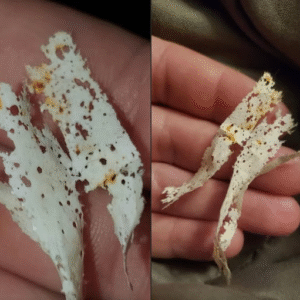The loss of someone close to us is one of the most difficult and painful experiences that life can bring. It profoundly affects us not only emotionally but also mentally and even physically. The process of healing and coming to terms with such a loss is rarely quick or straightforward; grief can linger for months, years, or even a lifetime. During this time, many people find themselves searching for meaning, trying to understand what death really means, or seeking ways to cope with the intense feelings of sadness and loss. This universal human experience has long fascinated scientists, who have begun to explore not only the psychological impact of grief but also how our bodies and senses react to the presence of death.
One particularly fascinating area of research involves the chemical changes that occur in the body after death. Scientists have identified that when a living organism dies, its body starts to release certain chemical compounds as part of the natural process of decomposition. Among these compounds is putrescine, a substance well-known for its strong and unpleasant odor, which is commonly associated with decaying flesh. Although this may seem disturbing, the discovery of putrescine’s role in decomposition has important implications for understanding how humans and other animals respond to environmental cues that signal danger or death.
Putrescine, along with other related chemicals, acts as a powerful signal in nature. Animals have evolved to detect these odors instinctively, often using them to avoid potential threats or to identify areas that may be unsafe. Recent studies have shown that humans, too, respond to these chemical signals—sometimes without even realizing it. Psychologists Arnaud Wisman and Ilan Shrira conducted controlled experiments where participants were exposed to very low concentrations of putrescine. The results revealed that these individuals became more alert, vigilant, and cautious immediately after exposure. Many of them physically moved away from the source of the smell, demonstrating a clear avoidance behavior.
What is especially interesting about these findings is that most participants were not consciously aware of the smell or its association with death. Despite this lack of conscious recognition, their bodies reacted automatically, triggering a primitive fight-or-flight response. This suggests that our sensory systems are wired to detect chemical signals related to life-threatening situations even when we are not fully aware of it. It highlights an important connection between our sense of smell and our survival instincts, a connection that often operates beneath the surface of conscious thought.
This research opens up new perspectives on how scent influences human behavior beyond what we traditionally understand. Just as certain smells can evoke powerful emotions such as comfort, attraction, or nostalgia, other odors—like putrescine—can prompt instinctive reactions geared toward protection and self-preservation. It is important to clarify that while putrescine itself does not give people the ability to predict death or foresee when it might occur, it does provide evidence that our bodies are finely tuned to chemical signals related to safety and danger.
Understanding these subtle, unconscious responses deepens our appreciation of the complex ways in which humans interact with their environment. It also sheds light on how our evolutionary history shapes the very foundations of our behavior. As researchers continue to explore the sensory dimensions of grief and survival, we may gain even greater insight into the ways that loss and death affect us on levels beyond what we can immediately perceive. This knowledge not only enriches our scientific understanding but may also eventually lead to new methods for supporting those who are grieving, helping them to navigate their emotions with greater awareness of the biological processes at work.
In conclusion, the experience of loss touches every aspect of our being—heart, mind, and body. The discovery that chemicals like putrescine influence human alertness and caution in response to death-related signals highlights just how deeply embedded our survival instincts are. It reminds us that grief is not just an emotional journey but also one that engages our senses and biological responses. Through ongoing research, science continues to uncover the hidden ways in which we are connected to the natural cycles of life and death, offering hope that one day we can better understand and support the healing process for those facing unimaginable loss.





